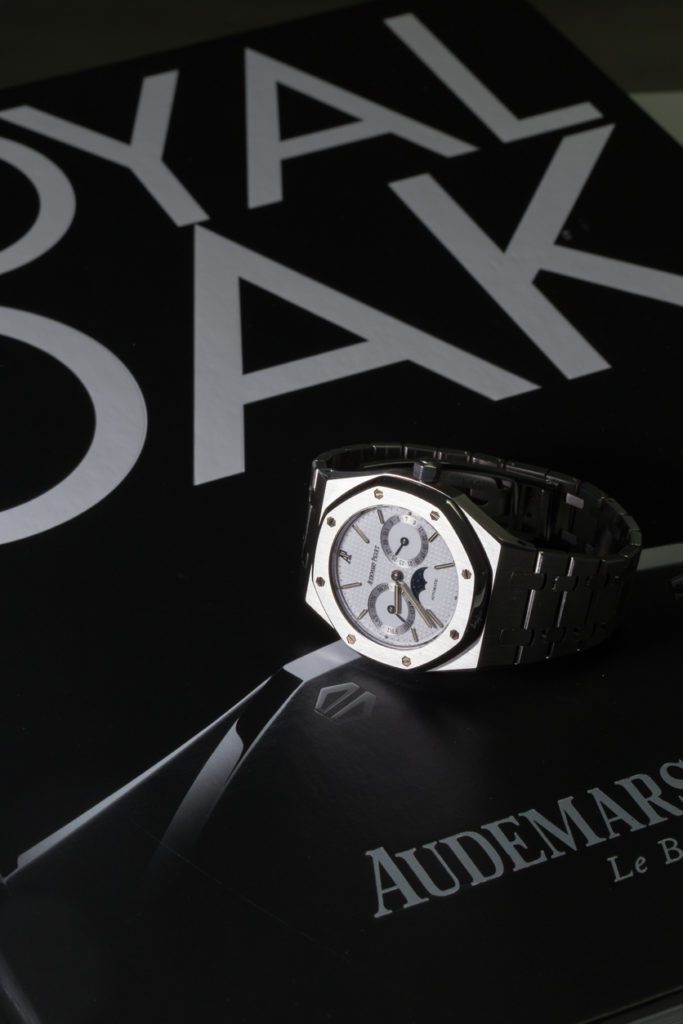
Audemars Piguet Watches
North of Geneva, in the Jura Mountains, in the small town of The Vallee de Joux, the Audemars Piguet watch brand was born. Due to the iron ore available in the region, the Swiss timepiece evolved into the brand it is today.
In the 18 century, during the winter months, farmers would spend hours a day in their homes’ day light-filled rooms crafting wheels, bridges, semi-precious stones, pinions, and springs for the watchmaking industry. The tight-knit community and the family artists led the way for the brand name Audemars Piguet watches.
Louis Audemars and Edward Auguste Piguet were childhood friends and reconnected in the 1870s. They discovered they were both watchmakers and were working to create mechanical timepieces.
By 1875 the two men joined together to create the brand that we know today as Audemars Piguet.
Before they joined forces, Audemars created complicated watch movements for different manufacturers to then finish and fit into their own cases.
Piguet performed the final regulation on the watches.
After they started working together, Audemars oversaw the watches’ production and technical aspects, and Piguet focused his time on sales and management.
By 1881 the watchmaking team announced the name Audemars Piguet & Cie, a watch brand known today.
Audemars and Piguet died in 1918 and 1919, respectively. The company continued with sons Paul Louis Audemars and Paul Edward Piguet, moving the company forward to the success seen today.
During the early-mid 1900s, the two sons pushed for innovation and, in 1925, released the thinnest pocket watch caliber. The first skeletonized pocket watch was released in 1934.
Grand Complication Pocket Watch was released in 1899. It featured a minute repeater, alarm, perpetual calendar, deadbeat seconds, chronograph, and split-seconds hand.
The company built a reputation for inventiveness when it unveiled the first-minute repeater wristwatch in 1892. They continued with their ingenuity by pioneering the jumping seconds hand pocket watch. and the first skeleton watch.

Skeleton Pocket Watch
A skeleton pocket watch is a pocket watch that shows the inner movement that makes the watch “tick.” The mechanisms are seen through glass or uncovered directly so you can touch the mechanisms oh so gently. The word skeleton watch was used because the outer case is like the “skin” on the body and the inside or underneath is the skeleton.
In 1946, Audemars Piguet launched the world’s thinnest wristwatch. In 1967 the brand released the first self-winding automatic caliber featuring a central rotor with a thickness of 2.45mm.
On the eve of the 1972 Swiss Watch Show, Audemars Piguet gave Genta the task of creating a luxury sports watch. The next day Genta presented the idea of the Royal Oak.

The Royal Oak
The Royal Oak featured was made of stainless steel and an integrated bracelet. This was different than other previously made Audemars Piguet watches. The case of the Royal Oak had daring designs not ordinarily seen on other watch brands. The octagon bezel with eight screws featured a round dial. The design is iconic and is still sought after today.
The watch saved the Audemars Piguet watch company brand by making it one of the most popular models in the watch industry. In 1972 when it was first produced, it took three years for Audemars Piguet to sell 1,000 Royal Oaks since sales have increased.
The Royal Oak Blue Dial men’s watch was launched at the Basel fair in 1972. Never seen before, the luxury watch is a steel timepiece and more expensive than the Patek Philippe dress watch and more than ten times the cost of a Rolex Submariner.
The Royal Oak Offshore in 18k gold with a black ceramic bezel, push-pieces, and screw-locked crown was introduced in 1993. It is one of the most prominent sports watches of all time. It is a fusion of rose gold and a black ceramic case.
Some Royal Oak watches feature the Royal Oak Hands with luminescent coating making this watch one for collectors.
Audemars Piguet introduced black ceramic into the Royal Oak Line in 2017. The black ceramic is made of zirconium oxide and yttrium oxide. The black ceramic is seen in some Offshore models. The Royal Oak Line also comes in various metals and finishes, from steel to 18k gold to frosted gold and pave diamond designs.
The Royal Oak Offshore is known for its bold look and more masculine and sportier presentation, which is different than the classic Royal Oak.
The Royal Oak celebrates its 5oth anniversary this year. It is one of the most collectible watches available. Audemars Piguet released the 39-mm Royal Oak Selfwinding Flying Tourbillion Extra-Thin to mark the momentous occasion.
There is no denying that the Royal Oak inspired other brands and models.
The Royal Oak Concept Flying Tourbillion GMT
The Audemars Piguet Royal Oak Concept Flying Tourbillon GMT is part of the line and case that has been used for eighteen years. The first Royal Oak Concept watch, designed by Claude Emmenegger, was presented in 2002 to mark the 30th anniversary of the Royal Oak.
The movement was developed by Audemars Piguet Renaud & Papi (APR&P). The line tends to be more experimental than the Royal Oak Offshore. The line has been a springboard for technical development. The first version combined a titanium case, a black ceramic bezel, a blacked-out dial/movement, and featured rose-gold accents. The watch was flashy and sophisticated looking.
The subsequent model was the Royal Oak GMT Tourbillion and was more low-key. It is monochromatic gray, including the display, the rubber strap and clasp, and even the movement’s back. The large case is made from sandblasted titanium. The bezel is complimentary and also sandblasted titanium. The screw-down crown and the push-piece at the side of the case are grey ceramic.
The Jules Audemars Collection
As a tribute to the original founders, Jules Louis Audemars, the collection has a simple, classic, and sometimes vintage appeal. Jules Audemars was a pioneer in the watch industry. He was dedicated to the art of mechanical calibers and was refined and artful. The collection features Audemars Piguet watches.
Audemars Piguet Jules Audemars Perpetual Calendar
Audemars Piguet watches are often considered in terms of the Royal Oak and Royal Oak Offshore watches. A finer, less sporty watch is the Jules Audemars Perpetual Calendar.
Not known as an everyday watch, it is a special kind of watch that is worn on special occasions. The watch has a brown sunray dial, with rose gold index hour markers and hands.
A finely printed seconds and minutes track appears between the applied rose gold index hour markers around the dial’s perimeter.
Turn the watch over, and the watch features a transparent sapphire back that is secured with six screws evenly spaced, with three on top and three on the bottom. The back reveals the in-house caliber.
The case itself is 18kt rose gold and slender in appearance. It has a polished fixed bezel and lugs with a brushed finish. The movement is an ornately engraved and partially skeletonized solid gold automatic winding rotor. The letters AP show along with the different features of the movement such as “ADJ TO HEAT COLD FIVE (5) POSITIONS”, “ISOCHRONISM,” and “THIRTY-EIGHT (38) JEWELS”, “SWISS AUTOMATIC,” along with the AP logo.
The Calendar sub-registers are a slightly darker brown and have a white printed typeface to indicate the day, date day of the week, and leap year indicator located at the center of the 12 o’clock sub-dial. The moon phase is displayed in vivid color at the 6 o’clock position.
With the impeccable craftsmanship and the pride of owning one of the prestigious brands like Audemars Piguet, where does a person find a watch at the best prices?
Whether you are looking for one of the minute repeaters, millenary models, Royal Oak Offshore watches, one of Audemars Piguet dress models, or an original Royal Oak, R & J Jewelry and Loan may be a perfect shopping place for Audemars Piguet used watches.

R & J Jewelry and Loan specializes in all luxury watch brands.
As a pawn shop located in San Jose, CA, and serving all of the surrounding communities, the company has been in business since 1978. They built their reputation on personalized services and their extensive jewelry selection in various price ranges.
They strive to set themselves apart from other pawn shops by offering real money for your personal items. Fair and reasonable offers are how they do business.
Fine watches are their specialty. Do you need instant cash? Pawn your Rolex, Omega, Cartier, Audemars Piguet, or other fine watches. They have a watch appraiser on site with over 20 years of experience. Vintage Rolex, Vintage Omega, and Vintage Cartier watches are their specialty; the older, the better.
